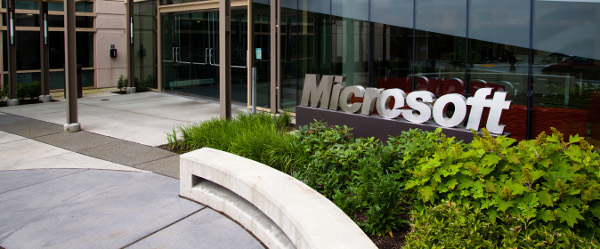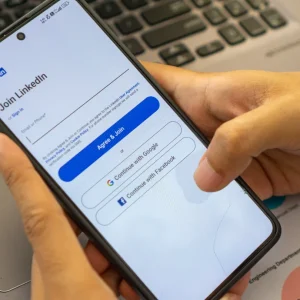
With Google testing self-driving cars and Facebook applying for a license to launch an electronic money service in Ireland, it’s no secret that tech giants have their fingers in a lot of pies.
With this in mind, we thought it would be timely to check out exactly what Microsoft’s up to, now new CEO Satya Nadella’s reign is well under way.
His much-trumpeted focus on a mobile-first, cloud-first strategy has seen Redmond make Office available on Apple’s iPad as well as open up APIs to allow developers to build apps for Windows 8.1 and Windows Phone 8.1 simultaneously.
So devices and cloud are clearly money-spinners for Microsoft, but what other businesses is the company involved in?
Server and cloud
Azure
Azure is Microsoft’s cloud computing platform and has been around since 2010. It provides Platform-as-a-Service and Infrastructure-as-a-Service options, you can build and deploy apps and provision Windows Server or Linux virtual machines.
As of July 2014, a public preview of Azure Machine Learning (AzureML) is also available. This predictive analytics tool pulls in Xbox and Bing algorithms and lets customers make their own to pull all kinds of predictions out of big data.
Windows Server
Windows Server 2012 R2 offers features and enhancements in virtualisation, management, storage, networking, virtual desktop infrastructure, access and information protection, and the web and application platform.
Telefonica has used it as the basis of its own private cloud (used as part of a hybrid cloud solution) and trimmed IT costs by 15%.
SQL Server
This is pretty much Microsoft’s in-memory database, competing with the likes of SAP’s HANA, IBM’s platform and Oracle’s own recently-announced offering. It crunches data but isn’t to be confused with AzureML, which also rakes through the ones and zeros.
Surface tablet
"The tablet that comes with Office" is how Microsoft bills it. The Surface is a great piece of kit for the enterprise but doesn’t compare too well against the offerings of rivals Apple and Google, which have seen their devices taken up in the workplace under BYOD policies. Perhaps that’s why Microsoft is so keen on choose-your-own-device…

Windows Phone/Nokia
It will take a while for Nokia phones to pay back the whopping $7.2bn Microsoft forked out to acquire the handset manufacturer last year, but it was about time that Redmond got into mobility. Speculation that Ballmer was pushed to leave after admitting the firm was late to the game arose when he announced his resignation, but the phones have been received pretty well since.
They all now run Windows Phone 8.1, Microsoft’s mobile operating system, more of which later.
Xbox One

According to the Xbox website, "Xbox One was built by gamers for gamers". Maybe that’s true, but Microsoft owns it. The first console launched in 2001, emerging as a challenger to the Playstation and selling 24 million units by 2006.
Its successor, the Xbox 360, came out in 2005 and sold 77.2 million units before the One hit the shops in May last year.
However, weeks before the console’s release it met with controversy after Microsoft revealed that it would need a daily internet connection to be able to run games, and restrictions on buying second-hand games – both clauses were quickly revoked before the launch.
OneDrive
This could have gone in cloud, but it’s more of a storage play from Microsoft. OneDrive, formerly SkyDrive, is Redmond’s entry to an already-crowded market featuring players such as Google, Dropbox, Box and many more.
The secret is to offer either great collaboration between devices via the cloud, or to offer a bucketload of storage. Microsoft’s concentrated on the latter, doubling its free capacity to 15GB and giving away 1TB with Office 365.
Skype
Perhaps the signature VoIP service, Skype brings people together from all over the world often for free – well, there is the price of bad signal, fuzzy, frozen webcam images and incredibly slow connections to pay.
Now Microsoft is planning to retire some Mac and Windows versions of the software as it moves to quicker release cycles for the product.
At the start of the year CBR reported on a survey that less than 10% of companies rely on downloadable solutions like Skype to conduct virtual meetings with colleagues and clients, opting for browser-based solutions instead.
Bing
Redmond’s search engine challenger to Google, Bing turned five in June 2014. However, that means zilch in terms of market share: Research firm ComScore found it has just a 2.25% share in mobile and tablet search, though Apple now uses it to run Siri and Spotlight through it.
Cortana

Microsoft’s voice assistant was announced in May 2014, and is a product of the firm’s research into machine learning, producing a powerful tool that can check your email, set up meetings and find restaurants for you.
Cortana is billed by Microsoft as "the world’s first truly personal digital assistant," and has a persona inspired by the AI character in video game Halo.
Office
We all know about, own and use at least one Office application. Word, Excel, PowerPoint et al have come to define business software as we know it. We’ve all been in those dreary board meetings with an executive hastily clicking away on his computer to set into motion PowerPoint slides of unutterable dullness.
CEO Nadella has also taken a more open approach compared to his predecessor, Steve Ballmer, under whom Microsoft was accused of being too Windows-centric. Now not everything is about the platform, and Nadella signalled this by releasing Office for iPad.
However, Office is seeing some competition these days from shiny new startups producing interesting collaboration software. Quip and Huddle are two of these, and take a more social media-informed approach to productivity tools, designing software for work on tablets and mobile devices.
Microsoft is trying to counter this by encouraging people to use Office via the cloud, with its Office 365 subscriptions.
Azure ML
Azure Machine Learning is Microsoft’s predictive analytics tool based in the cloud. It’s set for a public preview in July, but a host of partners are already using it, including Carnegie Mellon University, which hopes to cut campus energy costs by 30% by finding trends in heating and air conditioning usage.
The tech giant’s Data Platform general manager, Eron Kelly, told CBR: "It allows you to shift from analysing the past to anticipating the future. What’s really cool about this service is I literally push a button and I publish the model as a service. It’s running in the cloud and you don’t have to worry about hardware, health monitoring, or failover, this is all done for you.
"Because of the simple graphical interface, there’s a broader group of people who can use this service."
Windows 7
Considered by many as the easiest Windows version to use since the demise of XP, 7 now accounts for 46.6% of all web traffic, according to Net Applications (May 2014).
It was originally intended in 2009 as a marginal upgrade to Windows NT to fix problems experienced by Windows Vista users. However, it proved more popular than that, with improvements to performance as well as a more intuitive interface and taskbar.
Windows 8

Released in 2012, 8 confused the heck out of people. Its start screen became widely despised and seems like a tablet-inspired touch interface that just doesn’t work on laptops and computers. It’s no coincidence that it provides just 6.66% of web traffic, according to Net Applications (May 2014).
Windows 8.1
This welcome upgrade was first made public in June 2013, and set about making 8 easier to use immediately, with the return of the much-missed Start screen, tighter integration with OneDrive and a Bing-powered search engine.
It also comes as part of Microsoft’s focus on more agile product releases, looking to introducing regular annual major updates for its platforms and services.






